The 50 Greatest Pop Songs of the ’80s

The music of the 1980s remains as enduring as ever, beloved by those who lived through the decade as well as by younger fans who tend to look back at the period’s garish excesses with some degree of bemusement. The dawn of MTV ushered in an exciting era for music defined by flashy videos, outlandish fashion, massive hair, and scores of great singles that cover a vast range of stylistic territory. So here are what we feel to be the 50 Greatest Pop Songs of the ’80s. All of the singles appeared in the Top 10 of the Billboard Hot 100 singles chart sometime during the ’80s. Only one song per artist is included.
At the end of the list you’ll find a Spotify playlist featuring all the singles in order.
50. “Love Shack” – The B-52’s (1989)
The party anthem for the fall of ’89, “Love Shack” has lost none of its manic charm. A high-energy stomper with audacious vocals by Kate Pierson, Cindy Wilson and Fred Schneider, the song is a zany thrill ride. Witty, nostalgic and whimsical, and featuring a guest spot by the Uptown Horns, the song soared to No. 3 for two weeks, the first time the veteran band’s quirky dance-rock had ever infiltrated the mainstream.
49. “Don’t Dream It’s Over” – Crowded House (1986)
The lush guitar ballad from the Australian trio’s self-titled debut, “Don’t Dream It’s Over” has an air of dreamy melancholy as frontman Neil Finn contemplates obstacles to life and love. Finn’s vocal performance is earnest and rich with feeling. A doleful organ, by producer Mitchell Froom, provides the song a dreamy, early ’70s retro feel. Crowded House has released incredible music since, but “Don’t Dream It’s Over” is the once-in-a-career classic for which they’ll always be remembered.
48. “Africa” – Toto (1982)
The epic third single off Toto IV, the band’s commercial pinnacle, “Africa” became their only No. 1 hit. The loping rhythm upon which the track is built is actually a short piece snipped from a free-form jam by drummer Jeff Porcaro and percussionist Lenny Castro and then looped throughout the song. With lofty vocal harmonies and a lush musical arrangement that captures an air of mystery, “Africa” remains one of the decade’s most revered singles. Point of interest: Despite the popular meme that depicts Dorothy’s little dog Toto thinking “I miss the rains down in Africa,” the line in the song is actually “I bless the rains down in Africa.”
47. “Cars” – Gary Numan (1980)
The lead single from Numan’s third album, The Pleasure Principle, “Cars” was one of the most influential releases of the new wave era. With dark waves of synths fizzing with electricity and Numan’s oddly robotic vocals creating an unsettling mood, it was a radically unusual Top 40 hit at the time. Unlike many synth-pop songs of the ’80s, “Cars” doesn’t sound thin and tinny — the use of real rather than electronic drums and bass guitar gives it a rock and roll kick. Crank it up on a great sound system and be prepared to be blown away.
46. “All Night Long (All Night)” – Lionel Richie (1983)
A soulful party song with a Caribbean flair, “All Night Long (All Night)” quickly shot to the top of the pop chart in 1983. To give the song an international feel, Richie affects a slight faux-Jamaican accent, and also includes a segment of nonsensical lyrics he invented to sound vaguely African. The song begins with a slow, sultry groove before erupting with steel drums, marimba, a jubilant horn section and the sounds of celebration. Richie performed “All Night Long” at the closing ceremony for the 1984 Olympics in Los Angeles, forever cementing its legacy.
45. “Owner of a Lonely Heart” – Yes (1983)
After forming in London in the late ’60s, Yes released a string of magnificent progressive-rock epics in the ’70s. By the early ’80s, the band shifted in a mainstream direction. Their 1983 album 90125 became the band’s commercial apex, lifted by the smash “Owner of a Lonely Heart.” An electric rocker with a strong melody, a simple but memorable bassline, massive guitar riffs and unexpected bursts of electronic effects, “Owner of a Lonely Heart” spent two weeks at No. 1. It’s potent, tightly wound and surprisingly focused, given the song’s complicated genesis involving multiple writers, musicians and producers. It marked the band’s final appearance in the Top 10.
44. “Eternal Flame” – The Bangles (1988)
Co-written by vocalist Susanna Hoffs with ace songwriters Tom Kelly and Billy Steinberg (who also penned Cyndi Lauper’s “True Colors” and Madonna’s “Like a Virgin”), the exquisite ballad “Eternal Flame” was the second hit from The Bangles’ Everything. Built around a graceful music-box motif on keyboard and percussion, it boasts a subtle bassline and swirls of delicate strings. Hoffs’ lead vocals and the harmonies by Vicki Peterson, Michael Steele and Debbi Peterson are gorgeous, especially during the dramatic climax.
43. “Let the Music Play” – Shannon (1983)
As the first “freestyle” dance song to make a mainstream impact, “Let the Music Play” is widely regarded as groundbreaking. Although disco had long since been declared dead, dance music was poised to make a major comeback on Top 40 radio, and Washington, D.C. native Shannon provided the spark. Shannon’s vocal is cool and sexy, the groove scorching hot. With its sinuous melody and insistent rhythm, “Let the Music Play” is still more-than-capable of filling up a dance floor.
42. “Tainted Love” – Soft Cell (1981)
Recorded in 1964 by California soul singer Gloria Jones, “Tainted Love” began life as an obscure b-side. Jones re-recorded it with a disco vibe in 1976, but it still failed to make an impact. Enter British synth-pop duo Soft Cell who, five years later, revamped “Tainted Love” into a new wave classic by slowing it down and infusing it with an aura of seedy decadence. The song is an insidious earworm, with a clever arrangement of dusky synths and fabulous electric whip cracks. It’s an obligatory part of any ’80s night, a brisk sing-along punctuated by those inevitable hand-claps.
https://youtu.be/L87DDH3pWN0
41. “Sexual Healing” – Marvin Gaye (1982)
By the early ’80s, Marvin Gaye had been struggling personally and professionally for years. His last major hit had been the 1977 chart-topper “Got to Give it Up (Part 1).” The 1982 album Midnight Love was a fresh start for the artist — a perfect balance of polished and modern R&B combining with Gaye’s singular vibe. The lead single, “Sexual Healing,” is a slick soul ballad with a stunning gospel-tinged vocal. Gaye suddenly had a major hit on his hands, and Midnight Love became the most successful album of Gaye’s storied career, selling nearly 4 million copies. Any hopes of a long-term rebirth were quickly dashed, however, when the singer’s father shot and killed him during an argument.
40. “I Guess That’s Why They Call It The Blues” – Elton John (1983)
Elton John’s 1983 album Too Low For Zero is easily his best work of the ’80s and the soulful piano-ballad, “I Guess That’s Why They Call it The Blues,” featuring Stevie Wonder on harmonica, became the album’s biggest hit. Elton’s vocal is rich and passionate, and Bernie Taupin’s lyrics capture just the right amount of pathos in the torment of being separated from a loved one. Although John notched several more hits in the ’80s, his output, as he struggled with drug addiction, was decidedly spotty. It wasn’t until 1989’s stunning “Sacrifice” that he was able to match the timeless beauty of “Blues.”
39. “Fast Car” – Tracy Chapman (1988)
A heartrending tale of a woman desperate to escape the gripping cycle of poverty, “Fast Car” personalizes the working poor who are often caricatured by those who don’t understand what it’s like to walk in their shoes. Chapman’s gritty realism is set to a glowing folk-rock background, with a hypnotic repetitive melody on acoustic guitar during the verses. For the chorus, Chapman allows herself an outpouring of passion over heavy drums and thick strands of guitar. Despite its serious subject matter, “Fast Car” was powerful enough to land at No. 6 on the Hot 100. That could happen in the ’80s. But today? Never.
https://vimeo.com/66531862
38. “Burning Down the House” – Talking Heads (1983)
One of the greatest bands to emerge from the post-punk scene of the late ’70s, the Talking Heads brewed a wildly innovative mix of new wave, pop, rock, funk and international. Fronted by the quirky, unpredictable and freakishly talented David Byrne, the band didn’t reside within the lines of commercial Top 40 pop. Still, a few of their songs managed to connect with larger audiences. One, “Burning Down the House,” reached No. 9 in 1983. The song is a jittery jumble of eclectic rhythms and surreal electronic effects over which Byrne shouts vaguely sinister, non-sequitur lyrics. The end result is strangely hypnotic art-rock — like a sonic painting, it doesn’t tell a story but creates a vibe of manic unease. Listen to it cranked up on headphones, and let your mind travel where few other bands can take you.
37. “The Boys of Summer” – Don Henley (1984)
The lead single from Don Henley’s second post-Eagles album, 1984’s Building the Perfect Beast, “The Boys of Summer” seethes with bittersweet regret and determination. It’s a brilliant studio creation, weaving evocative imagery of fading youth and lost love over a cinematic soundscape with multiple guitar and percussion parts, and layers of keyboard. Henley’s lyrics are razor-sharp, and his vocals genuinely emotional. A moody black and white video, directed by French photographer Jean-Baptiste Mondino, won the 1985 MTV award for Video of the Year and helped expose Henley to an entirely new generation of music fans.
36.“Alone” – Heart (1987)
Bolstered by a dynamic sense of drama, “Alone” is the ultimate rock and roll power ballad, featuring crashing drums, searing guitar and a deft string arrangement weaving over a glimmering electric piano. Ron Nevinson, a veteran engineer and producer who’s worked with a long list of top artists (Kiss, The Rolling Stones) gets the absolute most out of the song. What really nails it, though, is a signature vocal performance by the incomparable Ann Wilson. “Alone” remains a cornerstone of Heart’s enduring legacy, which includes a recent well-deserved induction into the Rock and Roll Hall of Fame.
35. “One Thing Leads to Another” – The Fixx (1983)
A British five-piece led by Cy Curnin and Jamie West-Oram, The Fixx launched their career in 1982 with the Rupert Hine-produced Shuttered Room. Hine returned for their triumphant second release, 1983’s Reach the Beach, one of the most important rock albums of the early ’80s. Moody lead single “Saved by Zero” was a moderate hit, but it was this follow-up that scaled to No. 4, remarkable for a piece so edgy, tight, frazzled. Its jagged guitar, punctuated by Curnin’s staccato vocals and Rupert Greenall’s manic keyboard swirls, makes for a feverishly tense three minutes. It’s one of many such pieces of brilliance by a band that doesn’t receive nearly the recognition it deserves.
34. “I Wanna Dance With Somebody (Who Loves Me)” – Whitney Houston (1987)
The lead single from her second album Whitney, Houston’s exuberant dance-pop confection “I Wanna Dance With Somebody (Who Loves Me)” was her fourth straight #1 single in a remarkable streak that would eventually stretch to seven. Houston’s vocals are strong and confident, and the song is upbeat, fun, and a natural on the dance floor. There is a carefree joy to the recording that captures a period in Houston’s career in which the possibilities seemed endless. Hearing it now, one can’t help but fondly remember her better days when she was arguably the greatest pop vocalist of our generation.
33. “Hungry Like the Wolf” – Duran Duran (1982)
Rio is the album that generally comes to mind when one thinks of Duran Duran. The fusion of glamour, sex, new wave-influenced rock and big melodies was a perfect storm that elevated the group to superstardom. Lead single “Hungry Like the Wolf” became a powerhouse on radio and MTV. Opening with a mischievous female giggle, the song is built on electric guitar lines that mirror Simon LeBon’s brazenly sexual delivery, feathered by a jittery keyboard riff, and anchored by a steady rhythm section. “Hungry Like the Wolf” reached number #3 in the U.S. and jump-started a sensational run that’s produced thirteen Top 20 hits for the band.
32. “(Don’t You) Forget About Me” – Simple Minds (1985)
British rockers Simple Minds landed a string of moderate hits in the U.K. in the early ’80s, but they were unable to crack the U.S. market until they were nabbed to record the theme song to John Hughes’ classic coming-of-age film, The Breakfast Club. The lush rocker, notable for a chugging guitar riff and bright swells of keyboard, was a departure for the band, who typically recorded edgier material. Jim Kerr’s crooning vocal echoes the poignancy, hope and possibility that comprise the themes of Breakfast Club. The song raced up the pop chart, eventually reaching No. 1. Simple Minds recently gave a terrific performance of the hit on the Billboard Music Awards to celebrate its 30th anniversary, and the soundtrack classic has lost none of its charm.
31. “99 Luftballons” – Nena (1983)
German band Nena, led by vocalist Gabriele Kerner, scored a surprise smash in 1983 with this anti-war epic. It soared to No. 2 in America and topped the charts around the globe. (Nena recorded an inferior English-language version for the U.S. market, but fans preferred the original German recording). A parable about World War III, “99 Luftballons” is a reflection of the perilous times of the early ’80s, and the overriding fear that anything might set off nuclear Armageddon. Many songs of that era touch on the subject, but few with the grace and poignancy of this hard-charging new wave rocker with an endearing vocal by Kerner. “99 Luftballons” was Nena’s sole Hot 100 appearance, and is one of only a handful of foreign-language songs to become a major hit in the U.S.
https://vimeo.com/70533494
30. “One More Try” – George Michael (1987)
George Michael’s Faith was one of the biggest albums of the ’80s, selling 25 million copies worldwide and yielding a remarkable six Top 40 hits, including the powerhouse ballad “One More Try.” The stripped-down gospel-flavored music, just a slowly swinging beat, bass and a mournful organ, is soulful backdrop for Michael’s emotional performance. The distance between his catchy yet emotionally shallow earlier single “Careless Whisper” to the yearning confessional “One More Try” is vast, showcasing Michael’s rapidly maturing gifts as a songwriter. It’s unusual for a song approaching 6-minutes to get enough airplay to reach No. 1, but “One More Try” was too good to be denied.
29. “Drive” – The Cars (1984)
The Cars’ smash fifth release, Heartbeat City, was one of the biggest albums of 1984, spawning several major hits, including “You Might Think,” “Hello Again” and “Magic.” It was the third single, though, that became the biggest hit of the group’s career: the poignant ballad “Drive.” Bassist Benjamin Orr’s nuanced but emotionally-charged vocal performance, sung over majestic waves of synthesizers, is note-perfect for the haunted vibe of the song. “Drive” has an almost dreamlike quality, and helped in part by a dramatic video, “Drive” rose all the way to No. 3 in the U.S.
28. “West End Girls” – Pet Shop Boys (1986)
“West End Girls” was the first taste of chart success for the British duo of Chris Lowe and Neil Tennant, one of the most prolific and influential pop groups of the last three decades. Inspired by New York City’s burgeoning hip-hop scene, the song features Tennant dourly reciting lyrics during the verses and then singing the choruses over atmospheric synthesizers and a jabbing bassline. Producer Stephen Hague helps create an ominous urban vibe, with the tension slowly escalating. “West End Girls” was a global smash, and remains the Pet Shop Boys’ signature song.
https://youtu.be/fVkN0VhOuZ0
27. “Lovesong” – The Cure (1989)
Opening with a bright slash of guitar, The Cure’s “Lovesong” is built on Boris Williams’ insistent beat, Simon Gallup’s wildly florid bassline and Roger O’Donnell’s forlorn keyboard, over which two distinct countermelodies duel for supremacy between the verses. It’s like interlocking pieces of a musical jigsaw puzzle. Robert Smith delivers the devotional lyrics with naked sincerity. “Lovesong” was released as the second single from The Cure’s 1989 masterpiece Disintegration, and became by far their biggest crossover pop hit in the U.S. It climbed all the way to No. 2, remarkable for a band that had until that point received almost no airplay on mainstream radio in America.
26. “Call Me” – Blondie (1980)
Co-written and produced by the legendary Giorgio Moroder, “Call Me” is the biggest hit of Blondie’s career. Produced for the film American Gigolo, “Call Me” reinvented the post-punk band as a high-powered disco-rock combo. Debbie Harry is sexy cool over the motoric rhythm, churning guitars and flashy synths. Moroder cited his experience working with Blondie as one of the reasons he generally doesn’t like producing bands -– he says they argue too much.
25. “(Just Like) Starting Over” – John Lennon (1980)
After the birth of Sean in 1975, John Lennon and Yoko Ono descended into a life of calm domesticity. But in November 1980 Lennon released a joint album with his wife called Double Fantasy. The first single, “(Just Like) Starting Over,” was a beautiful expression of love set to old-school ’60s-rock. It spent five weeks at No. 1 becoming Lennon’s biggest ever chart hit as a solo artist. Weeks after the release of Double Fantasy John Lennon was murdered, an indescribable loss for the world.
24. “Upside Down” – Diana Ross (1980)
Written and produced by Nile Rodgers and Bernard Edwards of Chic, the supremely catchy, funky dance-floor staple was instrumental in proving that Ross was still a commercially viable artist. Deceptively simple, with lyrics that display a willingness to disregard her man’s rampant infidelities with apparently no consequences, “Upside Down” spent four weeks at No. 1 and connected the legend with a new generation of fans.
23. “Don’t Stop Believin’” – Journey (1981)
Is there a more famous piano introduction in rock history? Followed by Steve Perry, voice slick and dexterous, beginning the tale of a small town girl, a city boy and “shadows searching in the night.” Relatable and inspirational, “Don’t Stop Believin’” is the prototype for arena rock, with big choruses that get fans singing and waving their arms in the air. It’s a perfect working class anthem, a karaoke favorite whose popularity has only exploded over the years. It currently remains one of the top 20 downloaded digital songs of all time.
22. “Need You Tonight” – INXS (1987)
Australian rockers INXS had built a solid fanbase in America, but it was their 1987 album Kick and its lead single “Need You Tonight” that made them stars. A tight and sparse slice of funk-pop with a wicked guitar riff, the song rose quickly to No. 1 and its striking video received strong support on MTV, a big factor in the success. For a brief period in 1987 and 1988 INXS was one of most popular bands in the world, and “Need You Tonight” was the song that shot them to the top.
21. “Jump” – Van Halen (1984)
Longtime fans drawn to the raw hard rock of Van Halen’s first five albums may have been shocked and dismayed upon first hearing the shimmering waves of synthesizers on “Jump,” but audiences around the world loved it. The combination of dynamic synths, a rock-solid rhythm section, David Lee Roth’s knockout vocal performance (the best of his career), and a blistering guitar solo by Eddie Van Halen made for an instant classic. Bolstered by a hard edge and aggressive attitude, the song leaps out of your speakers with galvanic force. “Jump” was lightning in a bottle for Van Halen, who would never again achieve this level of success.
20. “Karma Chameleon” – Culture Club (1983)
Culture Club’s only #1 hit in America, “Karma Chameleon” spent three weeks at the top in February 1984. The second single from their Colour By Numbers album, the song cemented Culture Club’s unique status in pop culture history. Deftly produced by Steve Levine, it features effortless interplay between the buoyant vocals, harmonica, and guitar, as Boy George’s soulful, velvety voice bounces right along with the music. Featuring a colorful video with elaborate costumes set on an 1800’s riverboat, the infectious sing-along was lovingly embraced by MTV and helped Colour By Numbers become the band’s most successful album.
19. “Don’t You Want Me” – The Human League (1981)
Vocalist Phil Oakey was reportedly unhappy with the commercial sheen of “Don’t You Want Me,” and resisted putting it on the album, Dare. Despite his ambivalence, it became the band’s big breakthrough in America, and the first of two No. 1 singles. Built on razor-sharp synthesizer lines and an electrifying rhythm part generated on a Linn LM-1 drum machine (which Prince would later make part of his signature sound), “Don’t You Want Me” is a sonic powerhouse. One of the first big mainstream synth-pop hits, it helped usher in an era in which synthesizers played an increasingly important role in popular music.
18. “Dancing in the Dark” – Bruce Springsteen (1984)
The lead single from Born in the U.S.A., “Dancing in the Dark” is by far Bruce Springsteen’s finest pop song. It’s also the biggest single of his career, featuring a ferocious beat and muscular riffs of keyboard. It’s raucous, ballsy,near-bursting with sexual energy. Perhaps it sounds slightly out of place with his scruffier, working-class brand of rock, but Springsteen’s version of a pop song is a pure thrill ride.
17. “What’s Love Got to Do With It” – Tina Turner (1984)
Tina Turner’s unlikely comeback took fire when her cover of Al Green’s “Let’s Stay Together” became a surprise hit in 1983. With her live shows getting rave reviews and industry buzz building quickly, Turner worked with multiple collaborators to assemble the Private Dancer, a tour de force of pop, rock and R&B. The lead single was “What’s Love Got to Do With It,” a slightly reggae-tinged mid-tempo gem, had been offered to multiple artists previously with no takers, and Turner was initially unenthusiastic about recording it. But her sultry performance turned the song into a smash, earning it three Grammy Awards: Record of the Year, Song of the Year and Best Female Pop Vocal Performance.
16. “Flashdance… What a Feeling” – Irene Cara (1983)
The main theme from the 1983 film Flashdance is a perfect melding of pop and dance with a glorious vocal by Irene Cara. With a long, glistening keyboard introduction that erupts into a bright and joyful pop anthem, “Flashdance” is a spirited celebration of music and dance that’s easy to love. It snagged both the Golden Globe and Oscar for Best Original Song, and Cara earned a Grammy for Best Female Pop Vocal Performance.
https://youtu.be/GelOkOzQ9cw
15. “Time After Time” – Cyndi Lauper (1983)
Cyndi Lauper hit big in 1983 with her debut album She’s So Unusual, led by the quirky party anthem “Girls Just Want to Have Fun.” Lauper rode that song to #2, and it remains an ’80s essential. The true magic is in the follow-up, the bittersweet ballad “Time After Time.” Lauper’s vocal is thick with regret, vulnerability and longing. Lauper sings over a bed of swaying keyboards, softly jangling guitar and a melodious bass. Lauper was able to show her serious side, which would become more prevalent as her career progressed. “Time After Time” hit No. 1 in America and helped cement Lauper’s status as one of the most iconic pop singers of the ’80s.
14. “Miss You Much” – Janet Jackson (1989)
Following up Control was no doubt a daunting endeavor, but Janet Jackson, Jimmy Jam and Terry Lewis were nothing if not ambitious. They ended up besting it by a mile with Rhythm Nation 1814, a hard-edged collection of pop, dance and R&B that not only grooves but has a positive message. The first single, “Miss You Much,” is a sizzling dance/pop anthem, formed around a heavy backbeat thickened by a funky bass-line, with swirls and bursts of keyboard underlying Jackson’s heavily layered vocals. The manic vocal arrangement during the chorus is particularly genius and Jackson sounds playful, self-assured and upbeat.
13. “Sledgehammer” – Peter Gabriel (1986)
A groovin’, ’60s soul revival featuring a sizzling brass arrangement by the Memphis Horns, Tony Levin’s supremely funky bass, drum work by the great Manu Katché, and Peter Gabriel’s sly recitation of every sexual metaphor in the book, “Sledgehammer” is a feast for the senses. Aided by an indelible, award-winning stop-motion video, directed by Stephen R. Johnson, the song hit No. 1 in July of 1986.
12. “Take on Me” – a-ha (1985)
The lead single from the Norwegian trio’s debut album Hunting High and Low, “Take on Me” is about as essential as it gets for ’80s pop. Featuring a dazzling keyboard riff and Morten Harket’s soaring vocal acrobatics, the song hit No. 1 in October 1985. The video, merging live action shots and pencil-sketch animation, was a massive hit on MTV, winning won six video music awards. The legacy of the song is enormous, and it remains popular today at ’80s nights where large crowds gamely try and match Harket’s high note, usually with little success.
11. “Total Eclipse of the Heart” – Bonnie Tyler (1983)
After hearing Jim Steinman’s work on Meat Loaf’s classic Bat Out of Hell, Welsh vocalist Bonnie Tyler approached him to collaborate. “Total Eclipse of the Heart” was originally conceived by Steinman for a musical about vampires, but he re-worked and produced the song for Tyler, bringing in a set of ace musicians: Roy Bittan and Max Weinberg from the E Street Band on piano and drums, Rick Derringer on guitar and Larry Fast on synthesizers. Rory Dodd, a frequent Steinman collaborator, sings the “turn around, bright eyes” vocal parts. A romantic and wrenchingly dramatic rock ballad with a darkly fantastical music video, “Total Eclipse of the Heart” spent four weeks at No. 1. As usual with Steinman’s work, the arrangements are ornate, but Bonnie Tyler’s ferocious vocal power and devastating performance is such that she’s not overwhelmed by the mania surrounding her.
10. “With or Without You” – U2 (1987)
By 1987, U2 was poised for a major leap into international stardom, and The Joshua Tree provided the necessary boost. Hailed by critics and beloved by fans, the album spent nine weeks at No. 1 and sold over 10 million copies in the U.S. Its success was sparked by “With or Without You,” a daring choice for first single. The song is an exercise in smoldering, escalating tension and cathartic release. Helmed by Bono’s tightly controlled vocals and The Edge’s blazing bursts of guitar, “With or Without You” is a breathtaking piece of songcraft that doesn’t follow the conventional norms of what a pop song should be.
9. “Everybody Wants to Rule the World” – Tears for Fears (1985)
The first U.S. hit for British duo Tears for Fears, “Everybody Wants to Rule the World” is a gleaming pop shuffle with a superb vocal by bassist Curt Smith. Although structurally simple — highlighted by a stately, undulating melody, a steady bass and a repetitive two-chord keyboard line — thematically, the song exudes unease and cynicism. It remains a beautiful recording and helped cement the album Songs from the Big Chair as one of the greatest of the decade.
8. “Back on the Chain Gang” – The Pretenders (1982)
The Pretenders’ “Back on the Chain Gang” was recorded during the most tumultuous period in the band’s history. In June 1982, they fired bassist Pete Farndon over rampant drug use. Two days later, guitarist James Honeyman-Scott died of an overdose. Chrissie Hynde wrote the beautifully elegiac “Chain Gang” as a tribute to Honeyman-Scott. Punctuated by Hynde’s devastating vocal, the wistful, heartbreaking song spent three weeks at No. 5 and was the biggest single of the band’s career.
7. “Let’s Dance” – David Bowie (1983)
David Bowie has made frequent, sudden left-turns throughout his legendary career. “Let’s Dance,” Bowie’s first No. 1 in the U.S. since his 1975 smash “Fame,” is a tightly wound ball of tension disguised as a funky pop song. With a slick electronic beat, woozy horns and a torrid solo by a young guitarist named Stevie Ray Vaughn, it’s about love and annihilation, the instinct to embrace passion when all else is gone. It works great as a pop song, but is much more than that, and is a fine example of a song recorded in the shadows of the Cold War menace.
6. “Bette Davis Eyes” – Kim Carnes (1981)
Singer-songwriter Jackie DeShannon first released the song in 1974. It went nowhere at the time, but, fortunately for everyone, found its way to Kim Carnes. Recorded for her sixth album Mistaken Identity, “Bette Davis Eyes” is a sexy, new wave rocker that oozes innuendo and attitude. Carnes nails the vocal, her nuance and phrasing perfect at every turn. From a growl to a conspiratorial half-whisper, Carnes knows how to wring every last bit of drama and meaning from the lyrics. “Bette Davis Eyes” was the biggest hit of 1981, spending an incredible nine weeks at No. 1 and winning Grammys for both Song and Record of the Year.
5. “Sweet Dreams (are made of this)” – Eurythmics (1983)
The striking image of Annie Lennox in her masculine suit and flaming orange flat-top is one of the visuals that defines the early MTV era. The song that accompanies it is a simple but profound statement about the human condition (Lennox has often referred to the song as a mantra). The main riff, improvised by Lennox while listening to the drum machine part that her partner Dave Stewart had been programming, is a simple two-bar arpeggio that loops throughout most of the song. Lennox’s vocal is extraordinary, taut and restrained during the initial verse, brimming with passion towards the end. It endures to this day.
4. “Every Breath You Take” – The Police (1983)
The lead single from The Police’s fifth and final album, Synchronicity, “Every Breath You Take,” an exploration of malevolent obsession, is the biggest hit of the trio’s career. A powerful black and white video directed by Godley & Creme helped cement the song’s popularity and its success helped Synchronicity sell over 8 million copies in the U.S. alone.
3. “Like a Prayer” – Madonna (1989)
“Like a Prayer” begins with shards of distorted guitar and the sound of a door slamming, followed by Madonna’s solemn opening lines delivered over a haunting background of organ and choral vocals. Then the drums and bass kick in, and “Like a Prayer” becomes an electric hymn reaching a powerful emotional apex featuring a dramatic sense of spiritual crisis. A controversial video directed by Mary Lambert, laden with provocative religious imagery, helped propel the single’s success. Madonna isn’t the first to explore the constant inherent tension between religion and sex, thrilling ecstasy and abject shame, but few have done it better.
2. “When Doves Cry” – Prince (1984)
Prince’s scorching, bitter masterpiece was a late entry to his film Purple Rain. “When Doves Cry” rocketed straight to No. 1, becoming the biggest hit of Prince’s legendary career. Prince’s taut, tightly layered vocals convey a slow boil of desperation and anguish and the artist twists the atmosphere of sexual tension as the song grooves toward a sonically innovative finale of slippery keyboards and shimmering vocal harmonies. Five minutes of gripping melodrama, “When Doves Cry” finds Prince at his best.
(Since Prince won’t allow his videos on YouTube, here is the legendary Patti Smith with her 2002 cover of the song.)
1. “Billie Jean” – Michael Jackson (1982)
If one song transformed an entire decade, it’s Michael Jackson’s “Billie Jean.” One of the greatest recordings in pop history, its foundation is a heavy back beat by drummer Leon Chancler and a sinuous bass-line by the late Louis Johnson. Soaring over it all is Michael Jackson’s innovative vocal delivery. His phrasing — every vocal hiccup, twirl and twinge perfectly placed — makes the song. The nation was transfixed by Jackson’s video, his steps alight as he traverses a barren urban wasteland like a cosmic alien superstar, twisting and grooving to the hypnotic beat. Audiences watched stunned as Jackson performed “Billie Jean” on the Motown 25th Anniversary TV Special — as he glided across the stage with his moonwalk. “Billie Jean” zoomed up the charts to No. 1 where it spent seven long weeks. It was the propulsion that hurtled the album Thriller into the stratosphere. Michael Jackson was now a star such as the world had never seen, on par with Elvis and The Beatles. Thriller became the biggest selling album in the world, a sonic hurricane that flattened the music industry and changed everything in its wake. A viscerally exciting piece of music, “Billie Jean,” tense and dramatic, enigmatic and otherworldly, is the epic recording that lit its fuse. It’s Who else but the King of Pop could have produced the single greatest pop song of the ’80s?
Support Metro Weekly’s Journalism
These are challenging times for news organizations. And yet it’s crucial we stay active and provide vital resources and information to both our local readers and the world. So won’t you please take a moment and consider supporting Metro Weekly with a membership? For as little as $5 a month, you can help ensure Metro Weekly magazine and MetroWeekly.com remain free, viable resources as we provide the best, most diverse, culturally-resonant LGBTQ coverage in both the D.C. region and around the world. Memberships come with exclusive perks and discounts, your own personal digital delivery of each week’s magazine (and an archive), access to our Member's Lounge when it launches this fall, and exclusive members-only items like Metro Weekly Membership Mugs and Tote Bags! Check out all our membership levels here and please join us today!




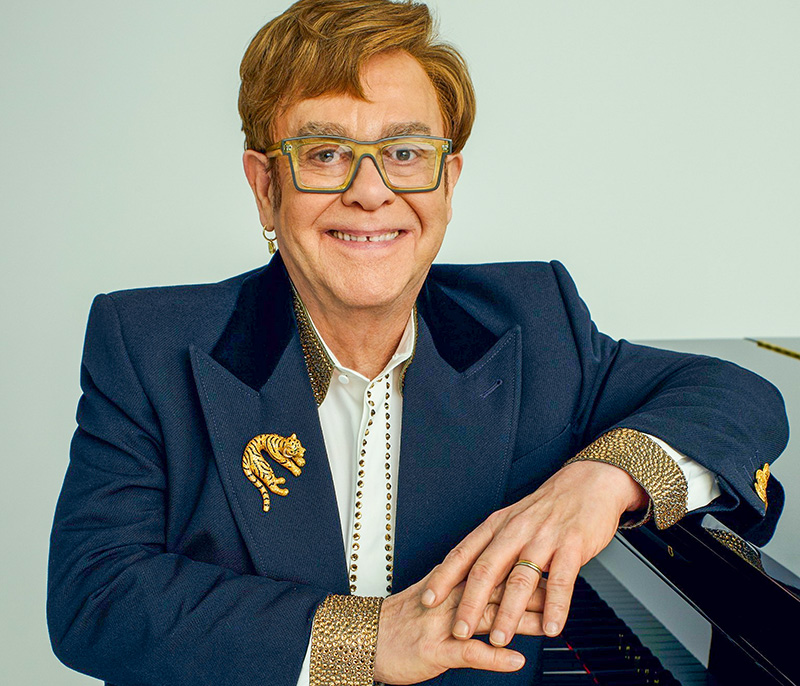
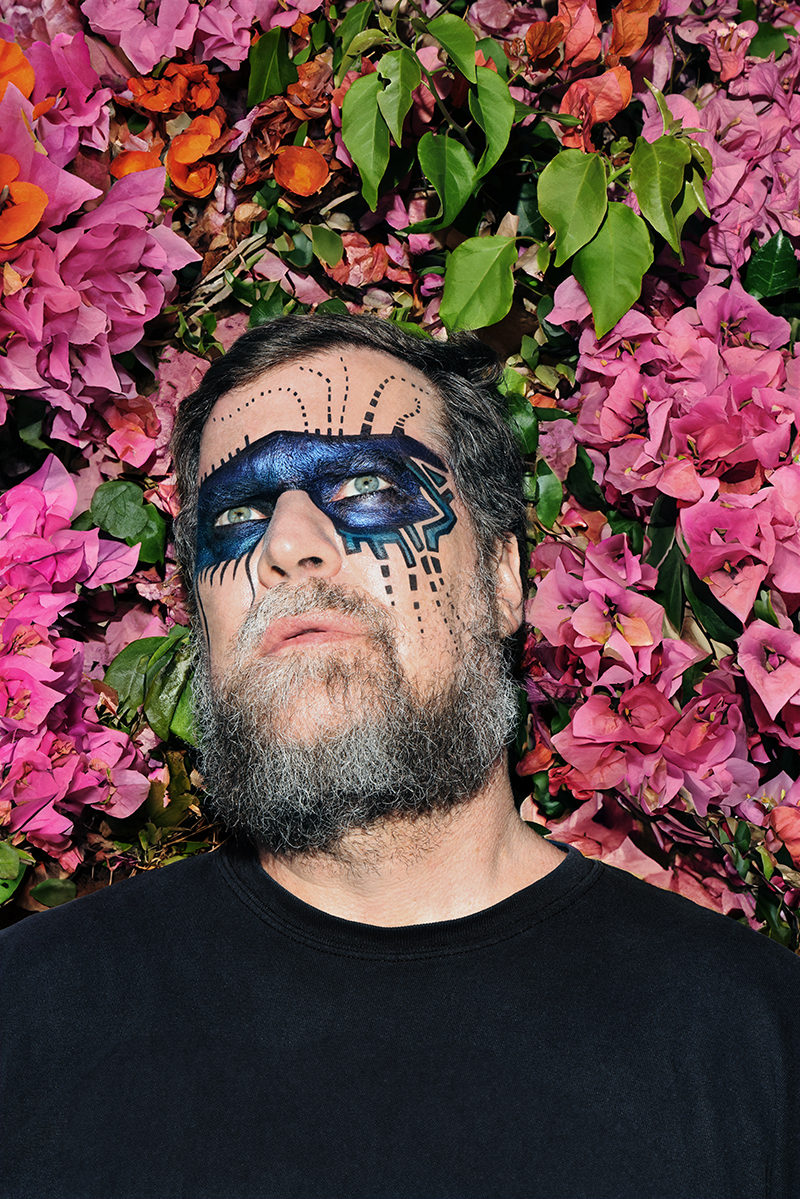
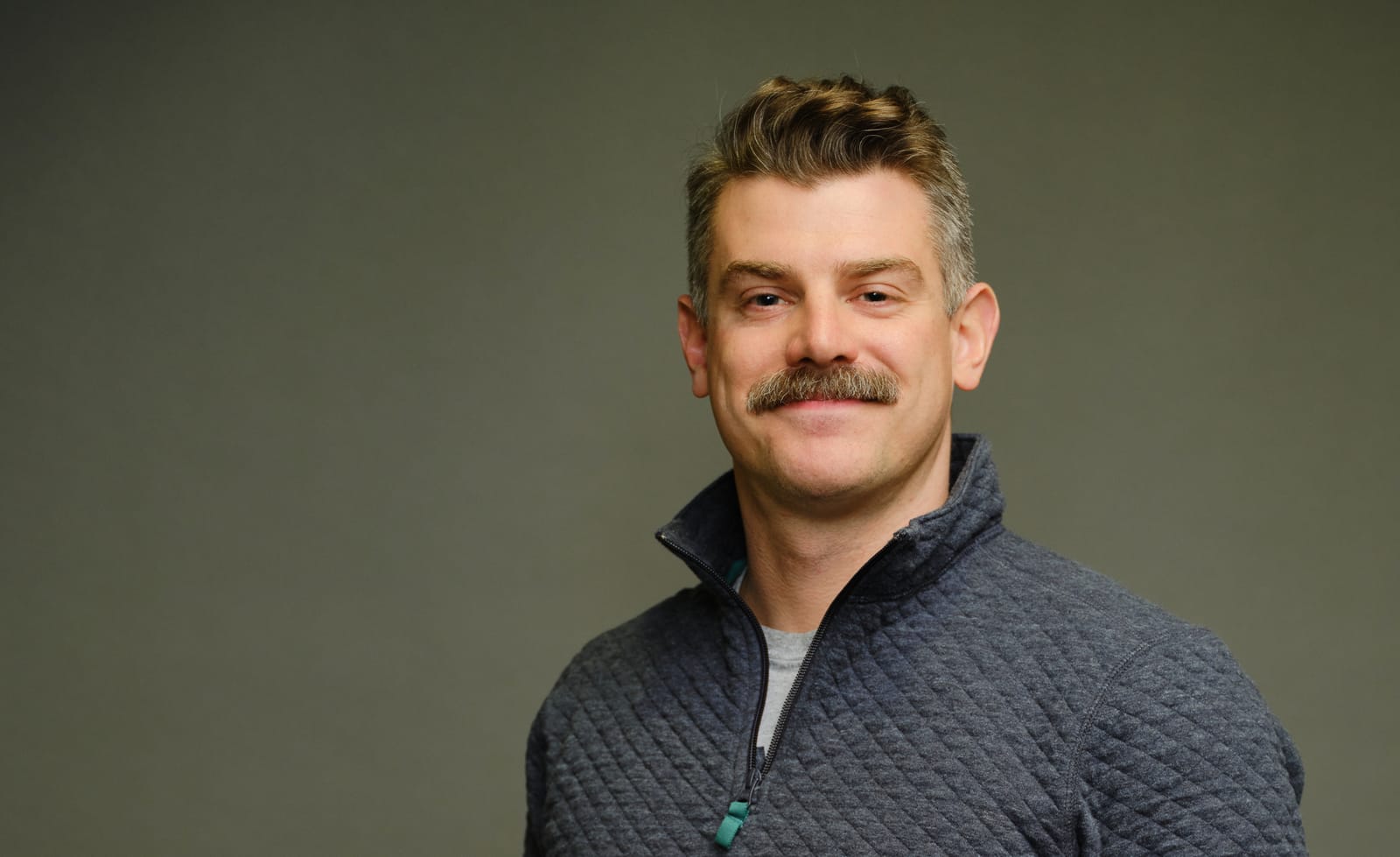













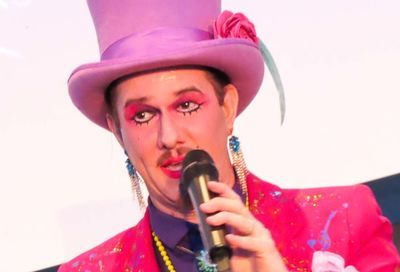

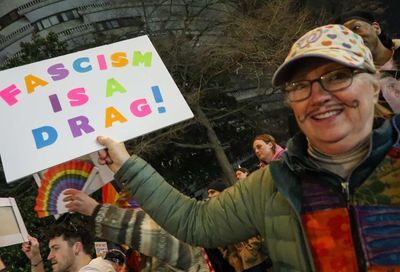
You must be logged in to post a comment.